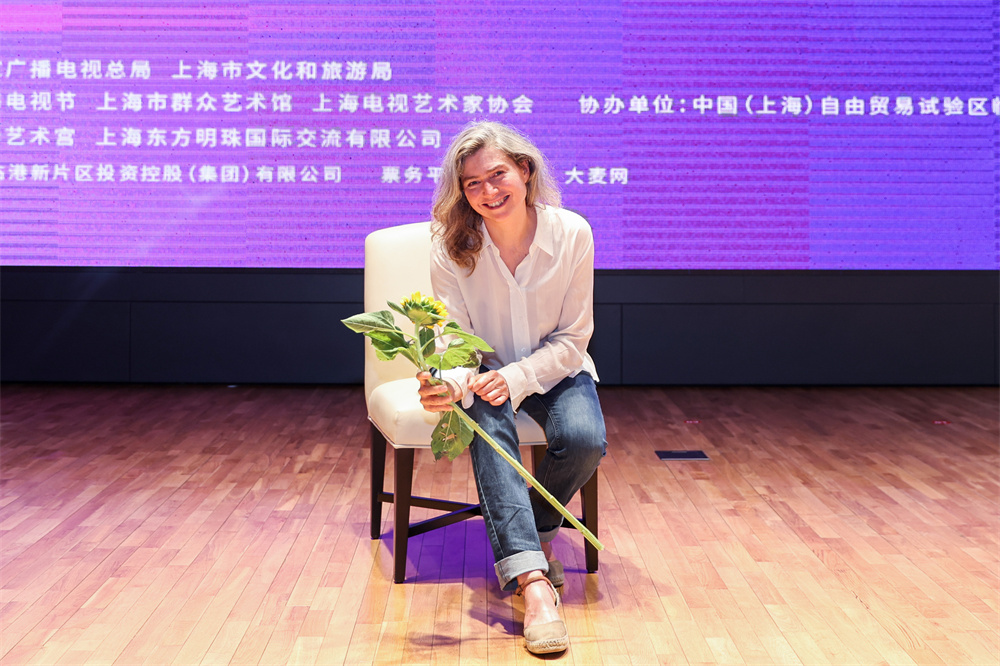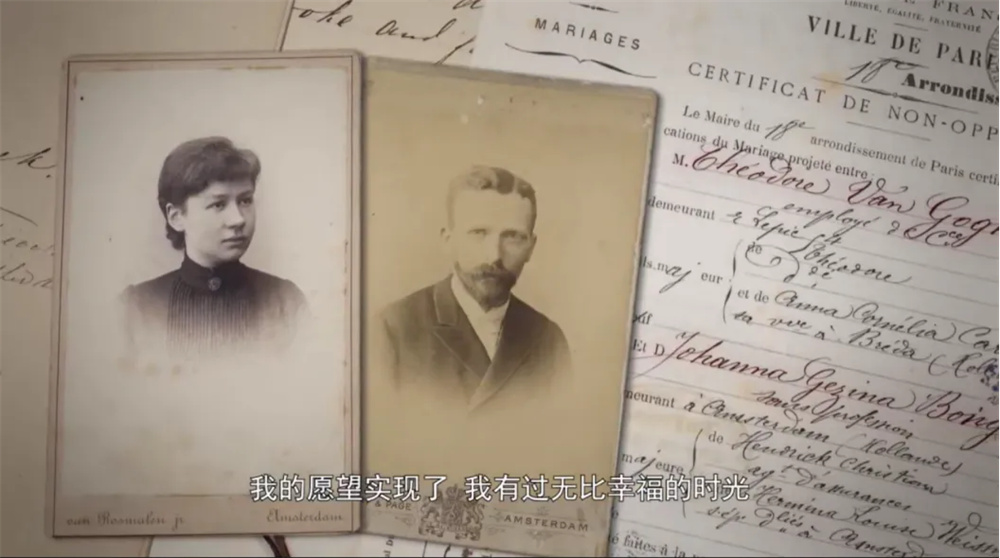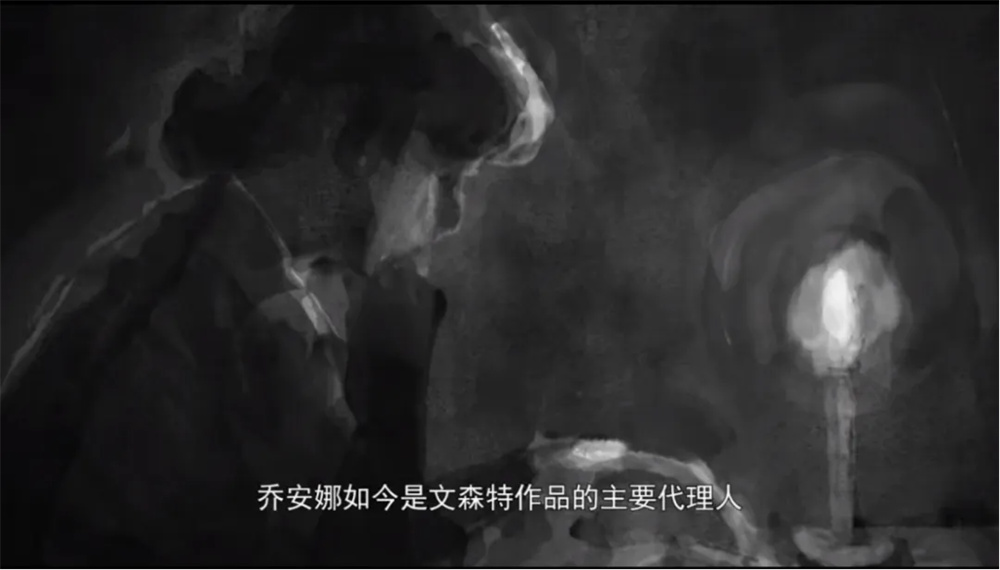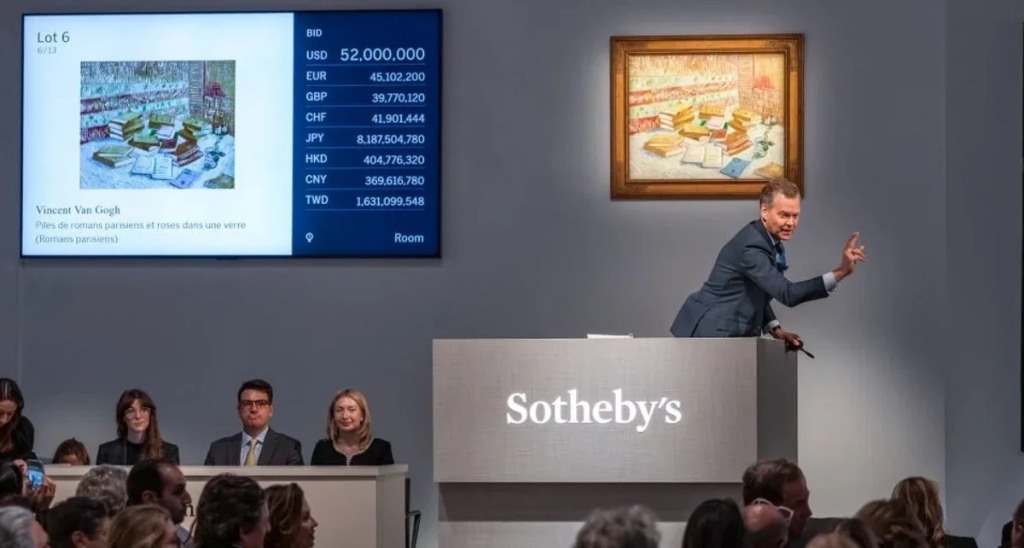
In 2024, the French Art Television Film Channel and the Orsay Museum jointly produced a new version of the documentary about Van Gogh, "Van Gogh: The Road to Mastership". Surprisingly, the protagonist of this documentary is a woman. Director Anne Richard, who has always shot female themes, chose to explore the mystery of Van Gogh's becoming a master from the perspective of a "her".

Poster for Van Gogh: The Journey to the Master
The character in the story is Joanna van Gogh-Bunger, the wife of Van Gogh's brother Theo. She only met Van Gogh three times two months before his death, but she completed the "road to mastery" that neither Van Gogh nor Theo had hoped to achieve. Without Joanna, Van Gogh's paintings might have disappeared. As a widow in the 19th century, Joanna's efforts were often ridiculed, and even her record of successfully organizing an exhibition for Van Gogh was once erased from history.

Joanna van Gogh-Bungle
On June 26, one of the Shanghai TV Festival's "Fragrant Magnolia" benefit screening activities, a meeting with the main creators of the documentary "Van Gogh: The Road to Master" was held at the China Art Museum. The event attracted many viewers. It is worth mentioning that this event was a BesTV barrier-free integrated screening, and sign language interpretation was also set up on site.

The scene of the meeting. Photo by Huang Xiaohe, a reporter from The Paper

Sign language explanation was provided on site
Van Gogh shot himself due to mental illness. A few months after Van Gogh's death, Van Gogh's brother Theo also died of depression. What most people don't know is that it was Theo's wife Joanna who traveled to many countries with Van Gogh's paintings to fulfill her husband's last wish, and she didn't give up even when she was repeatedly met with cold shoulders. Through the content of the documentary, we know that Joanna took a different approach, made up for the brothers' regrets, and made Van Gogh's art finally visible.
"Van Gogh: The Journey of the Master" discovered Joanna from historical materials, and then focused on her life, attitude and thinking, reinterpreting Van Gogh's success from a female perspective. The film is not only a retelling of Van Gogh's story, but also a story of Joanna's moment. It was her courage and wisdom that broke through the spiritual shackles of society on women and achieved a milestone moment in art history.
In order to explore what made Joanna so special, director Anne Richard opened Joanna's private diary and first traced back to the difficult period shortly after her husband's death. At that time, while recalling the short but passionate happiness in the past, she was determined to carry on Theo's wishes and move forward alone. This was not only due to her responsibility as a wife, but also her own insights into art.

Director Anne Richard holding a sunflower
Joanna comes from an ordinary insurance agent family. She can play the piano, has a degree in English literature, and is an educated romanticist. All her knowledge about art comes from Theo's teaching. In particular, Theo's appreciation of Van Gogh and the new generation of painters at that time deeply influenced Joanna.
For Joanna, the bright and bold paintings of Van Gogh are an aesthetic innovation; and the subjects he depicts are mostly ordinary people, which also reflects a progressive consciousness of equality and equal rights. She believes that Van Gogh has the potential to become a popular idol, and she has indeed made Van Gogh a popular art star. Perhaps the Van Gogh brothers did not think that Van Gogh could have such an effect. After all, when they were alive, Van Gogh's paintings were regarded by many well-known critics as crude and not worthy of being in the public eye.
Although Joanna was neither an artist nor a critic, she had a keen sense of the times and society. She knew that after her husband's death, if she did not play the role of both parents well, her son might look down on his mother like many other boys at that time. She had to be strong and independent both spiritually and materially to take on the responsibility of supporting the family. So she began to study again, hoping to fulfill her promise to Theo and create a future for herself by promoting Van Gogh's paintings.
The documentary starts with more than 600 letters, which describe how the two brothers understood each other. These letters also carry Joanna's thoughts, leading the audience to re-understand Van Gogh from another perspective.

Screenshot of Van Gogh: The Journey to the Master
【dialogue】
Q : Why did you decide to shoot a character who is so familiar to the public? What did you want to achieve differently?
Anne Richard : To be honest, I am not very good at art history. My subjects are usually women. At the beginning, I told my producer that I wanted to create something different this time and did not want to use women as my protagonists. Later, I found Joanna in the New York Times. The interview about her autobiography was written in Dutch. I can't read Dutch, so I did some relevant research on the Internet. Later, I found that Joanna's private diary is actually open to the public. As the research deepened, I found that this subject is very good, so I told my producer about it. In the end, we decided to shoot it, but from a different perspective.
Q : This is a story about love and responsibility. Is that what you want to convey to the audience? What else?
Anne Richard : I was also very confused at the time, because for me, like everyone else, I thought Van Gogh was a genius, and at least Joanna should not be the protagonist of the documentary. Later I found out that without Joanna, we would not see so many exhibitions about Van Gogh's works in museums in Amsterdam, the Netherlands today.
I want to convey some information to the audience in the form of black and white animation. Because of the prejudice against women in society, some exhibitions she held for Van Gogh were actually erased by history. In my opinion, there would be no young Van Gogh without Joanna. Joanna is a very important character.

Screenshot of Van Gogh: The Journey to the Master
Q : Is Joanna's legendary experience due to her personality? Because she was the only one besides Theo who believed that Van Gogh was not crazy?
Anne Richard : Yes. In fact, in French society at that time, people with bipolar disorder, that is, people who are sometimes crazy and sometimes depressed, were very prejudiced against them. But Joanna chose to believe that Van Gogh was not crazy, so she ran around like this, trying to make the world accept his artistic concepts and the true value behind them. This is indeed part of Joanna's personal charm. If people thought Van Gogh was crazy at that time, his precious paintings might have been burned long ago.
Q : Animation is virtual. How do you balance this relationship by using animation to present real events?
Anne Richard : We initially set a small proportion for the animation of Joanna, because we hope that the animation can resonate with the audience and make them sympathize with her experience. I also emphasized to David, the person in charge of animation, that we should not touch Van Gogh's paintings, so what you see is black and white animation, with only a little color, hoping that this form can make the whole plot more smooth. Animation is fictional, but it is based on a true story, which is also the biggest difference between documentaries and other films.

Black and white animation
Q : Why is the narration handled in this way? It is all the characters’ inner confession.
Anne Richard : In my opinion, whether it is the deep brotherhood between Van Gogh and Theo, or some of Joanna's own psychological activities, the emotions conveyed through the letters they exchanged are enough to express the emotions between the characters. The narration based on real voices is actually more meaningful than fictional narration.
Q : AI has replaced many human jobs. As a documentary director, do you feel a sense of crisis?
Anne Richard : I hope that under the new wave of fierce impact, documentary directors will always have a place. Take Joanna's diary for example. AI may find Joanna's diary, but it will never find the clues between Theo and Van Gogh in Joanna's diary, and will never capture the deep meaning behind the details. So in my opinion, in terms of emotional transmission, AI is far less delicate and comprehensive than humans.

Audience Interaction

Movie Ticket Stubs


